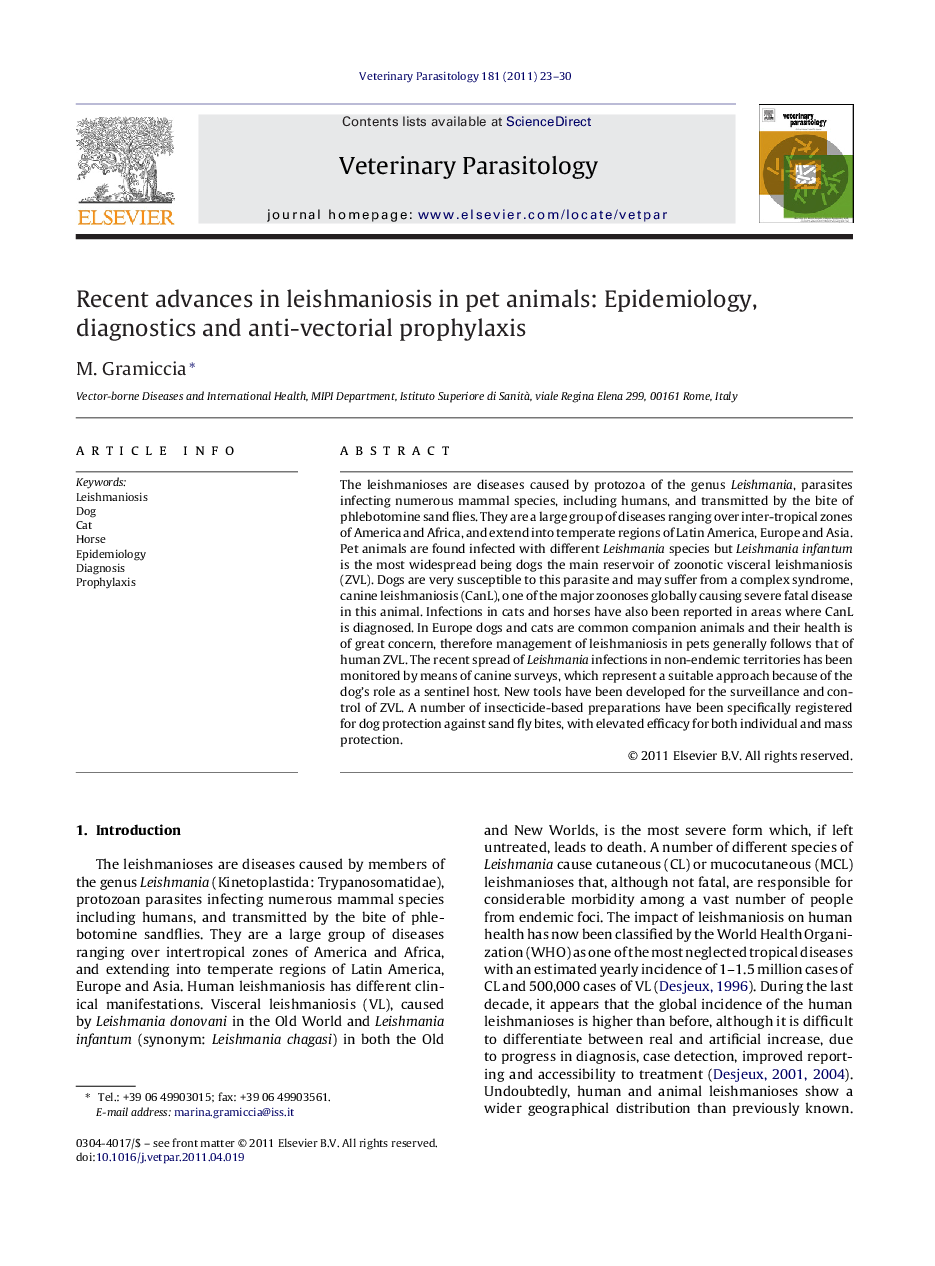| Article ID | Journal | Published Year | Pages | File Type |
|---|---|---|---|---|
| 2470194 | Veterinary Parasitology | 2011 | 8 Pages |
The leishmanioses are diseases caused by protozoa of the genus Leishmania, parasites infecting numerous mammal species, including humans, and transmitted by the bite of phlebotomine sand flies. They are a large group of diseases ranging over inter-tropical zones of America and Africa, and extend into temperate regions of Latin America, Europe and Asia. Pet animals are found infected with different Leishmania species but Leishmania infantum is the most widespread being dogs the main reservoir of zoonotic visceral leishmaniosis (ZVL). Dogs are very susceptible to this parasite and may suffer from a complex syndrome, canine leishmaniosis (CanL), one of the major zoonoses globally causing severe fatal disease in this animal. Infections in cats and horses have also been reported in areas where CanL is diagnosed. In Europe dogs and cats are common companion animals and their health is of great concern, therefore management of leishmaniosis in pets generally follows that of human ZVL. The recent spread of Leishmania infections in non-endemic territories has been monitored by means of canine surveys, which represent a suitable approach because of the dog's role as a sentinel host. New tools have been developed for the surveillance and control of ZVL. A number of insecticide-based preparations have been specifically registered for dog protection against sand fly bites, with elevated efficacy for both individual and mass protection.
